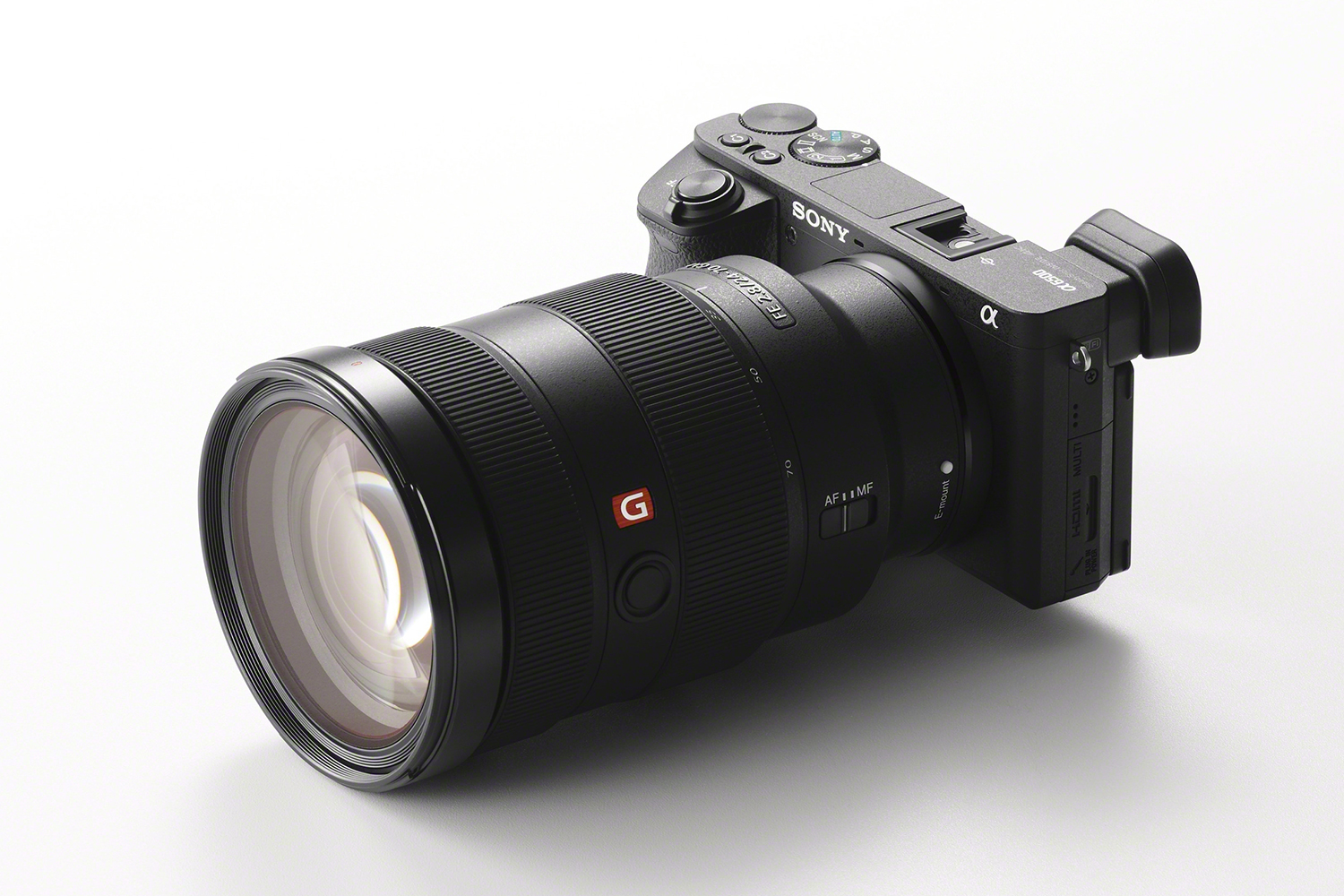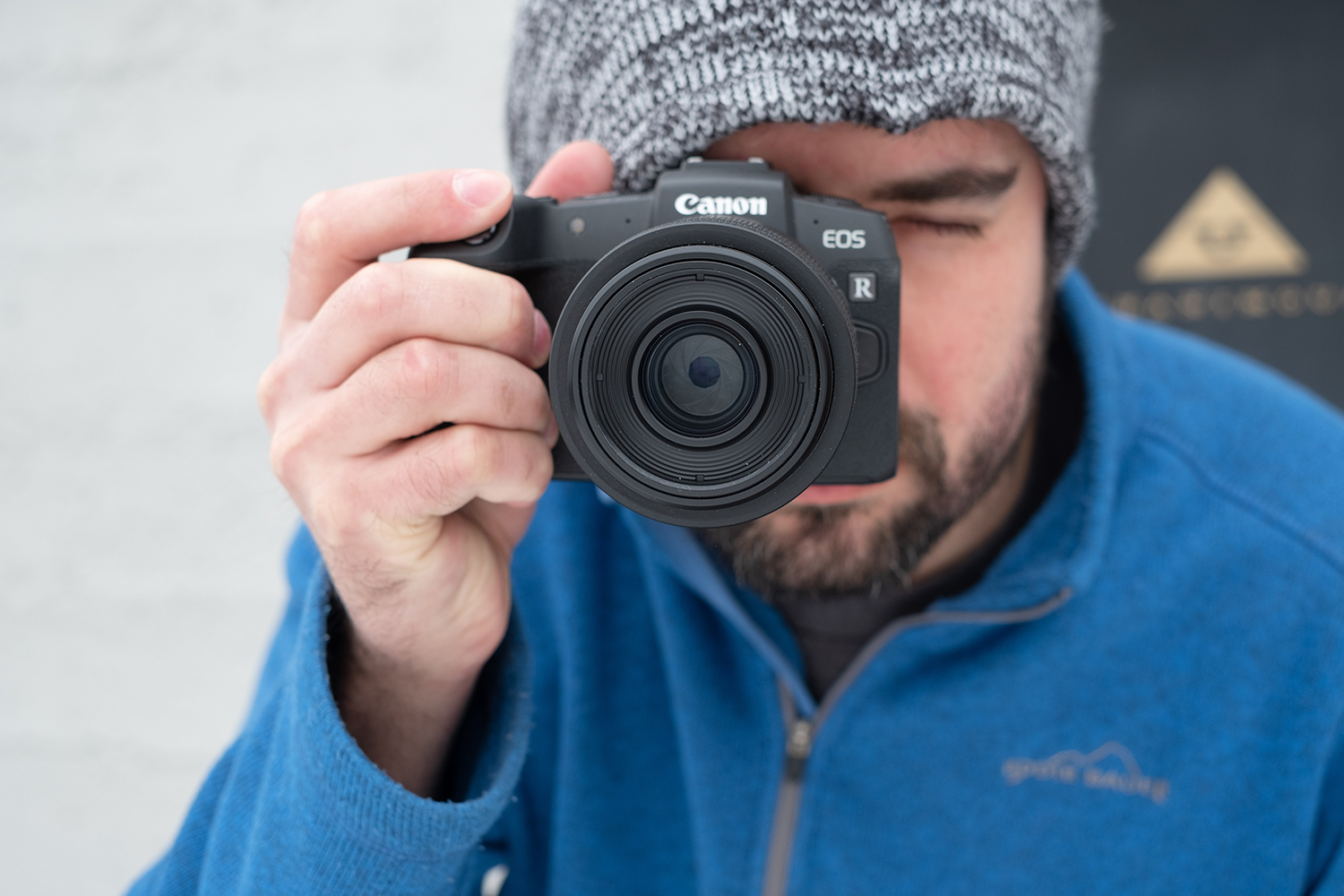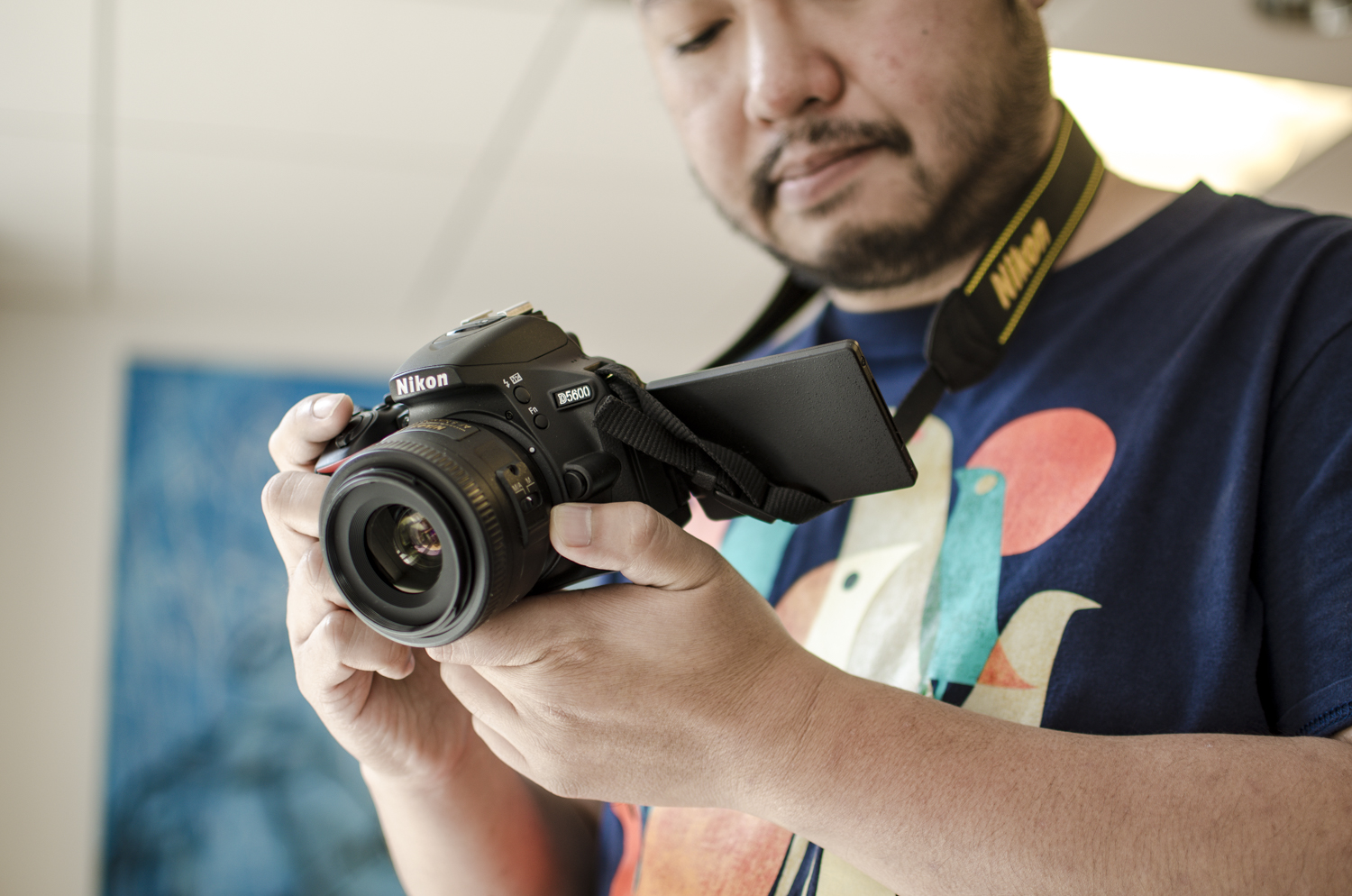Photography students need serious camera features — on a ramen noodle budget. Thankfully, there’s a middle ground between frustratingly limited cameras and the ones that cost more than a semester of classes. Our pick for the best camera for students is the Nikon Z 6 full-frame mirrorless camera. No, it’s not exactly on a ramen noodle budget, but it is very affordable for the features it offers and will leave new photographers with plenty of room into which they can grow. Beyond offering great image quality from its full-frame sensor, it offers fast continuous shooting, a weatherproof design, impressive video features, and an adaptable lens mount that lets you attach Nikon DSLR lenses in addition to lenses made specifically for the mirrorless system.
Don’t worry, there are plenty of excellent cameras that don’t cost quite so much, and we’ve include our favorites below. Whether you’re officially enrolled in photography classes or trying less conventional means to learn the craft, here are some of the best cameras for students, from high-end workhorses to budget beginner models.
The Best Camera for Students: Nikon Z 6

Why you should buy this: Excellent photos with video that’s just as good
Who’s it for: Enthusiasts, semi-pros, and serious beginners
Why we picked the Nikon Z 6:
The most expensive camera on the list, the Nikon Z 6 is also the most capable and leaves the most room to grow into. It is a full-frame camera, meaning the imaging sensor is equal in size to a frame of 35mm film, and it’s just about as capable for shooting video as it is still photos. Going with a top brand like Nikon is a good idea for investing in a system that you won’t need to switch out of down the road. The new Z lenses are very sharp, and with a simple adapter you can shoot with F-Mount DSLR lenses, which students could easily find used to save some cash.
The Z 6’s 24-megapixel sensor shines in all conditions, producing great images even in low light. In-body stabilization ensures sharp shots with any lens, at slower shutter speeds than would normally be usable. The design is reminiscent of Nikon’s DSLRs, despite the smaller profile, with a very ergonomic grip and functional control layout. It’s a great camera to take someone from novice to pro.
Video students will also find something to love in the Nikon Z 6: With an upcoming firmware update, it will become the first hybrid mirrorless camera to offer RAW video output, just like professional cinema cameras do. You need an external recorder to take advantage of this feature, but you might be able to beg your professor or AV club director to put one in the school’s gear inventory.
The best APS-C camera for students: Sony A6500

The best camera for students under $1,000
Why you should buy this: Excellent images with room to grow into full frame
Who’s it for: Enthusiasts and serious beginners
Why we picked the Sony A6500:
Full-frame cameras are great, but the price may keep them out of reach for most students (or their parents). Crop-sensor cameras using the smaller APS-C format offer a cheaper alternative, without sacrificing control, lens selection, or even much in the way of image quality. The Sony A6500 is one of the best such cameras, and is a good stepping stone for photographers aspiring to upgrade to Sony’s full-frame cameras down the road. The A6500 is compatible with both APS-C and full-frame lenses from Sony; APS-C models may be cheaper, but opting for full-frame will ensure future compatibility on full-frame cameras.
The Sony A6500 uses a 24MP sensor that captures solid image quality at a good price. The camera’s performance makes it a versatile machine, with 11-frames-per-second burst shooting and 5-axis internal stabilization. It can cover the gamut from still life to sports to landscapes, and that makes it a great choice for students who will be experimenting with many different photographic genres. The autofocus is also excellent, and it carries a very capable 4K video mode, as well. That’s all wrapped up into a fairly compact body — although, we suggest buying an extra battery or two, as battery life isn’t stellar.
The best camera for students under $1,000: Fujifilm X-T30

Why you should buy this: Stellar images at a stellar price
Who’s it for: Enthusiasts and serious beginners
Why we picked the Fujifilm X-T30:
The Fujifilm X-T30 is exactly what a budget camera should be, keeping the best parts about the $1,500 X-T3 while cutting minor features to bring the price below $1,000. The camera keeps the same sensor, processor, and fast autofocus system as the X-T3, which means excellent image quality and performance.
The X-T30 packs in 4K video, 8-fps continuous shooting, and an engaging control layout that makes it one of our favorite sub-$1,000 cameras currently on the market. The X-T30 doesn’t have the same speed or robust design as the X-T3, but the price is a better fit for students and anyone with a tighter budget.
Like the A6500, the Fujifilm X-T30 uses an APS-C sensor, but Fujifilm doesn’t make an additional full-frame line like Sony does. This has pros and cons; on one hand, all of Fujifilm’s lenses are tailored to the APS-C format, which makes them lighter and smaller, and the lens lineup is one of our favorites of any brand. On the other hand, there’s no path for upgrading to full-frame, which may be important to some customers.
The best cheap full-frame camera for students: Canon EOS RP

Why you should buy this: Full-frame quality without the full-frame price
Who’s it for: Enthusiasts and beginners
Why we picked the Canon EOS RP:
Is the Canon EOS RP the best or most exciting camera on the market? Not even close, but it is the cheapest full-frame camera on the market, at least among current models (Sony sells some older generations of its A7 line for less). That makes it a good tool for learning, and if you like the Canon ecosystem, it gets you in the door and clears the way for upgrading to a higher-end model in the future.
The Canon EOS RP uses a 26.2MP full-frame sensor that captures excellent JPEGs, although we found the RAW files to be a bit lacking compared to the full-frame competition. But RAW image quality isn’t everything, and the RP performs quite well in other areas. Thanks to technology called Dual Pixel Autofocus, the RP locks on to subjects very quickly, even in dim lighting conditions. There’s no in-body stabilization like the Sony and Nikon mirrorless systems, however, and the burst speed is a bit on the slower side at 5 fps. Other features are purposely left out to justify the lower price, like limiting 4K video to just 24 fps and a silent shutter that’s only available as part of an auto-exposure scene mode.
At about $1,300, however, the Canon EOS RP is cheaper than even some high-end APS-C cameras. The new RF lenses are also sharp — albeit, with few affordable options at the moment — and Canon DSLR lenses can be adapted with full compatibility. (As with Nikon, buying used Canon DSLR lenses is not a bad way to save some money.) The RP won’t grow with you as far as some of the other cameras on this list, but it’s a solid first step.
The Best Budget Camera for Students: Nikon D5600

Why you should buy this: Excellent image quality in a system that will grow with you
Who’s it for: Beginners
Why we picked the Nikon D5600:
Do you really have to spend over $1,000 to get a good camera as a photography student? Not at all. The Nikon D5600 is a beginner-friendly DSLR that you can pick up for around $600. While you may not find all the bells and whistles of a pricier camera, it still has everything students need to learn photography including manual exposure mode and RAW shooting.
The 24-megapixel APS-C crop sensor produces excellent images for the price point, and is right up there with the APS-C sensors in the more expensive Fujifilm and Sony cameras above. The autofocus is also not bad, although not as advanced as the systems on other cameras on this list — it also slows down a lot in live view mode, so the D5600 isn’t a great video camera.
One plus of a DSLR over a mirrorless camera is that the optical viewfinder doesn’t drain much battery power, and the Nikon D5600 can shoot all day (maybe even several days) with its 970-shot battery rating. It also uses the same lens mount as Nikon’s pricer full-frame DSLRs (known as the F-mount), which means you can start investing in full-frame glass now, and upgrade to a full-frame Nikon down the line.
Understanding camera terminology
New to digital cameras? Here are some helpful explanations of some of the terminology and tech that you’re likely to run into along your search. There’s a lot of jargon out there, and understanding it is key to knowing what you’re getting.
DSLR – This stands for Digital Single Lens Reflex. This type of camera uses a mirror to reflect light from the lens up into an optical viewfinder. The mirror then moves out of the way when the shutter button is pressed, allowing the light to pass through the shutter and land on the sensor.
Mirrorless – A mirrorless camera, as the name suggests, does not use a mirror. Instead, light from the lens goes directly to the sensor and photos are framed on the LCD screen or through an electronic viewfinder (EVF). Mirrorless cameras tend to be smaller than DSLRs because of this.
Sensor – The digital equivalent to film, the sensor is covered in light-sensitive pixels. Each sensor “sees” only red, green, or blue light, the data being combined later into a full-color image.
Megapixel (MP) – One million pixels. Used to denote the resolution of a sensor. A 24MP sensor has 24 million pixels.
Shutter – A physical curtain that opens and closes in front of the sensor to expose it to light. Many cameras also employ optional electronic shutters, which bypass the mechanical version.
Shutter speed – The length of time the shutter remains open to expose the sensor to light. Shutter speeds typically range from 1/8,000 of a second to as slow as 30 seconds. The longer the shutter is open, the more light is allowed in, but this also can lead to blurry images. A faster shutter freezes action, but does not let in as much light.
Lens – The eye of the camera. A lens is made up of several different glass elements that focus the light onto the sensor. Wide-angle lenses have a larger field of view (good for landscapes and group photos) and telephoto lenses have a narrower field of view (good for single-subject shots like wildlife and portraits).
Aperture – The diaphragm in a lens that can open or close to increase or decrease the amount of light the lens allows in. A wider aperture also creates a shallow depth of field, which allows for a subject to be in focus while the background is blurred, a technique often used for portraits. A small aperture keeps more distance in focus and is often used for landscapes.
F-number – You’ll see this on the lenses of both interchangeable-lens cameras and fixed-lens models. The f-number refers to the size of a lens’s aperture, but a smaller number means a larger aperture. Lenses are identified by their maximum aperture value, so if you see 50mm f/1.4 that means that lens can open up to a maximum of f/1.4, not that f/1.4 is it’s only aperture setting. When shopping lenses, looking at the f-number is an easy way to compare which can let in more light and produce a shallower depth of field.
IS – Image stabilization. Different manufacturers brand this in different ways, such as OIS (optical image stabilization), OSS (Optical Steady Shot) or VR (vibration reduction). Different manufacturers put stabilization in the sensor, the lens, or both.
FPS – Frames per second. The number of photos a camera can shoot sequentially in one second, or the number of video frames recorded in every second.
4K UHD – 4K Ultra High Definition video has a frame size of 3,840 x 2,160 pixels (roughly 4,000 lines of resolution, hence “4K”) and is four times the pixel count as Full HD 1080p.
Full HD 1080p – Full High Definition video has a frame size of 1920 x 1080 pixels. The “p” refers to progressive scanning, as opposed to interlaced scanning which is less common today.
Looking for more must-have deals? Head over to our curated Deals Hub and don’t forget to check our collection of the best Black Friday camera deals.



